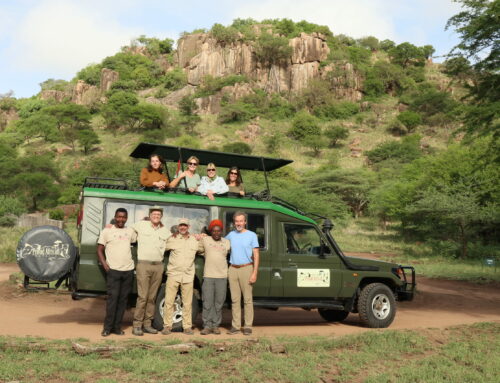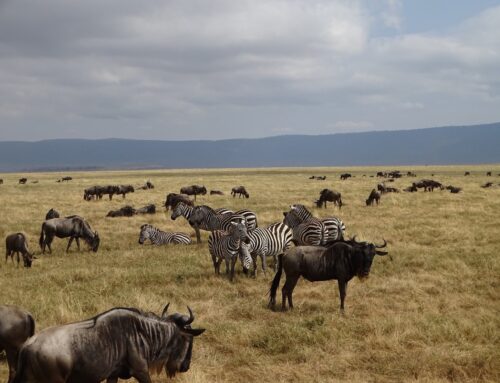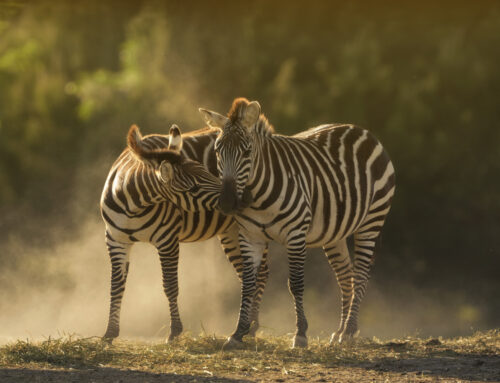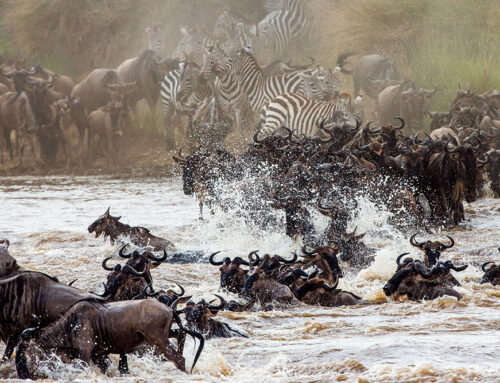The constant encroaching of humans on wildlife is beginning to take its toll in the Serengeti-Mara ecosystem. Recent studies have brought to light that the human population has quadrupled in some places along the border.
As the population grows, it continues to disrupt natural wildlife habitats, squeezing wildlife out of the edges and into the core. While people continue to build houses and establish a base in such close quarters, soil is depleted and migration routes are disrupted, leaving behind a real threat to African ecosystems.
How Is This Happening?
The protected areas, also known as buffer zones, have been overrun with the presence of livestock. While livestock seem relatively harmless, they’re leaving much lower quality and less grass for the natural grazers of the ecosystem. These include zebra, gazelle and wildebeest. This is causing a huge influence on numbers through food supply.
Also, with such a heavy presence of humans and livestock, the amount of naturally occurring fires is being reduced. Without fires, the variety of vegetation is impacted. This means that grazing opportunities are not as plentiful for wildlife that lives in these protected areas. The absence of grass is detrimental to the survival of the ecosystem.
How Can We Fix It?
With the impacts of encroachment trickling down the food chain, we have to do more than simply protect the areas that are already protected. This alone will not preserve biodiversity on the level required to maintain a thriving ecosystem.
Education is incredibly important when it comes to this type of preservation, so be sure to study the current situation of the Serengeti National Park as soon, and as frequently as you can! Those who can see the impacts in person and who read up on the subject are far more affected by the weight of the situation. With that knowledge, comes the power to do something about the lingering threat to African ecosystems.
The constant encroaching of humans on wildlife is beginning to take its toll in the Serengeti-Mara ecosystem. Recent studies have brought to light that the human population has quadrupled in some places along the border.
As the population grows, it continues to disrupt natural wildlife habitats, squeezing wildlife out of the edges and into the core. While people continue to build houses and establish a base in such close quarters, soil is depleted and migration routes are disrupted, leaving behind a real threat to African ecosystems.
How Is This Happening?
The protected areas, also known as buffer zones, have been overrun with the presence of livestock. While livestock seem relatively harmless, they’re leaving much lower quality and less grass for the natural grazers of the ecosystem. These include zebra, gazelle and wildebeest. This is causing a huge influence on numbers through food supply.
Also, with such a heavy presence of humans and livestock, the amount of naturally occurring fires is being reduced. Without fires, the variety of vegetation is impacted. This means that grazing opportunities are not as plentiful for wildlife that lives in these protected areas. The absence of grass is detrimental to the survival of the ecosystem.
How Can We Fix It?
With the impacts of encroachment trickling down the food chain, we have to do more than simply protect the areas that are already protected. This alone will not preserve biodiversity on the level required to maintain a thriving ecosystem.
Education is incredibly important when it comes to this type of preservation, so be sure to study the current situation of the Serengeti National Park as soon, and as frequently as you can! Those who can see the impacts in person and who read up on the subject are far more affected by the weight of the situation. With that knowledge, comes the power to do something about the lingering threat to African ecosystems.


